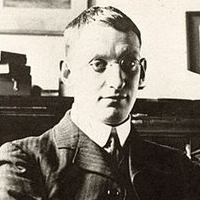C.E.K. Mees Medal
Get Involved
- Awards & Honors
- Community Engagement
- Early Career Professional...
- Education Outreach
- Public Affairs
- Local Section
- Students
-
Technical Groups
- Bio-Medical Optics
- Fabrication, Design and Instrumentation
- Image Acquisition, Processing. Display and Perception
- Optical Interaction Science
- Photonics and Opto-Electronics
- Quantum
- Sensing
- Technical Group Leadership Volunteers
- Technical Group Webinars
- Technical Group Search
- Technical Group Prizes
- Simulight Optics Challenge
- Volunteer
- Awards & Honors
- Community Engagement
- Early Career Professionals
- Education Outreach
- Public Affairs
- Local Section
- Students
-
Technical Groups
- Bio-Medical Optics
- Fabrication, Design and Instrumentation
- Image Acquisition, Processing. Display and Perception
- Optical Interaction Science
- Photonics and Opto-Electronics
- Quantum
- Sensing
- Technical Group Leadership Volunteers
- Technical Group Webinars
- Technical Group Search
- Technical Group Prizes
- Simulight Optics Challenge
- Volunteer
C.E.K. Mees Medal
The award was established in 1961 in memory of society charter member C.E.K. Mees, who contributed preeminently to the development of scientific photography.
Society Connection
C.E.K. Mees was a distinguished charter member, Board Member and Honorary Member.
Key Funders
C.E.K. Mees Family
About C.E.K. Mees
 Mees was a British scientist and photographic researcher. He attended the University of London, and was awarded his DSc with a dissertation on photographic theory in 1906. From 1906 until 1912, he worked for Wratten and Wainwright, Ltd., assisting Frederick Wratten in developing the first panchromatic photographic plates, as well as light filters and safelights for the darkroom.
Mees was a British scientist and photographic researcher. He attended the University of London, and was awarded his DSc with a dissertation on photographic theory in 1906. From 1906 until 1912, he worked for Wratten and Wainwright, Ltd., assisting Frederick Wratten in developing the first panchromatic photographic plates, as well as light filters and safelights for the darkroom.
In 1912, Eastman Kodak Company acquired Wratten and Wainwright because they were interested in the skills Mees provided. George Eastman convinced Mees to move to Rochester, New York, USA, where Mees created the Kodak Research Laboratories, becoming its first director.
He helped the US military in World War I in its instruction of photography. After the attack on Pearl Harbor, Mees became an American citizen so that he could have access to high security war projects and information during World War II. Later, he was named vice president in charge of Research and Development for Eastman Kodak; he remained at that position until he retired in 1955.
During his career, he published 100 scientific papers and 60 other works. Among his accomplishments was the development of sensitive photographic emulsions for use in astronomy. He served as the first president of the board of trustees of George Eastman House from 1947 until 1954.
Mees received various honors and awards including the Progress Medal from the Royal Photographic Society, Great Britain, the Hurther and Driffield Medal, the Henry Draper Medal, and the Franklin Medal. He was elected a Fellow of the Royal Photographic Society and the Royal Society and was posthumously inducted into the International Photography Hall of Fame. He died August 15, 1960.
